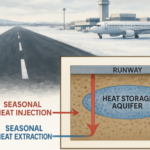The Role of Transportation in Green Policy: From Cars to High-Speed Rail
Introduction
As the world grapples with the challenges of climate change, transportation has emerged as a critical sector in the quest for a sustainable future. The transportation sector is responsible for a significant portion of greenhouse gas emissions, with cars and trucks being the largest contributors. In this article, we will explore the role of transportation in green policy, from the impact of cars to the potential of high-speed rail.
The Impact of Cars on the Environment
Greenhouse Gas Emissions
Cars are a significant source of greenhouse gas emissions, with the transportation sector accounting for around 15% of global emissions. In the United States alone, transportation-related emissions have increased by 15% since 1990, with cars and trucks being the largest contributors.
Air Pollution
Cars also contribute to air pollution, with particulate matter, nitrogen oxides, and volatile organic compounds being released into the atmosphere. These pollutants can have serious health consequences, including respiratory problems and increased risk of cancer.
The Potential of Electric Vehicles
Reducing Emissions
Electric vehicles (EVs) offer a promising solution to the environmental impacts of cars. EVs produce zero tailpipe emissions, reducing greenhouse gas emissions and air pollution. According to the Union of Concerned Scientists, EVs can reduce emissions by up to 70% compared to traditional gasoline-powered cars.
Charging Infrastructure
However, the widespread adoption of EVs is dependent on the development of charging infrastructure. Governments and private companies are investing heavily in the expansion of charging networks, with many countries setting targets for the installation of charging stations.
The Future of Transportation: High-Speed Rail
Reducing Emissions and Congestion
High-speed rail (HSR) offers a sustainable alternative to air travel and long-distance car travel. HSR can reduce emissions by up to 90% compared to air travel, and can also reduce congestion on roads and highways.
Capacity and Efficiency
HSR can also increase capacity and efficiency, with trains able to transport more passengers than cars or planes. According to the International Energy Agency, HSR can reduce energy consumption by up to 70% compared to air travel.
Conclusion
The transportation sector plays a critical role in the quest for a sustainable future. While cars and trucks are significant contributors to greenhouse gas emissions and air pollution, electric vehicles and high-speed rail offer promising solutions. As governments and private companies continue to invest in sustainable transportation options, we can reduce our reliance on fossil fuels and create a cleaner, healthier environment for future generations.
FAQs
Q: What is the impact of cars on the environment?
A: Cars are a significant source of greenhouse gas emissions, accounting for around 15% of global emissions. They also contribute to air pollution, with particulate matter, nitrogen oxides, and volatile organic compounds being released into the atmosphere.
Q: What are the benefits of electric vehicles?
A: Electric vehicles produce zero tailpipe emissions, reducing greenhouse gas emissions and air pollution. They can also reduce emissions by up to 70% compared to traditional gasoline-powered cars.
Q: What is the potential of high-speed rail?
A: High-speed rail offers a sustainable alternative to air travel and long-distance car travel. It can reduce emissions by up to 90% compared to air travel, and can also reduce congestion on roads and highways.



.png?w=150&resize=150,150&ssl=1)

.png?w=150&resize=150,150&ssl=1)
